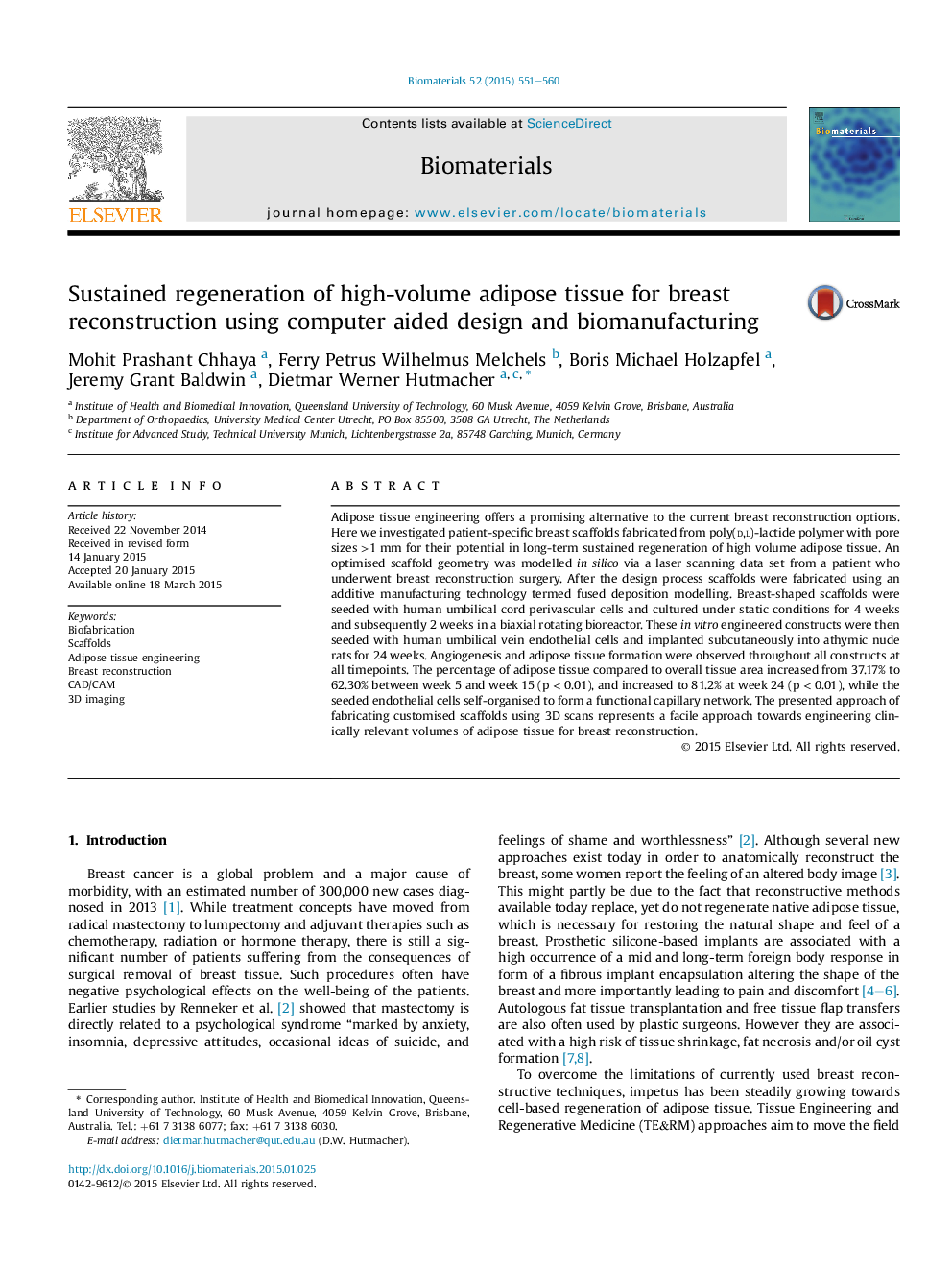| Article ID | Journal | Published Year | Pages | File Type |
|---|---|---|---|---|
| 6486056 | Biomaterials | 2015 | 10 Pages |
Abstract
Adipose tissue engineering offers a promising alternative to the current breast reconstruction options. Here we investigated patient-specific breast scaffolds fabricated from poly(d,l)-lactide polymer with pore sizes >1 mm for their potential in long-term sustained regeneration of high volume adipose tissue. An optimised scaffold geometry was modelled in silico via a laser scanning data set from a patient who underwent breast reconstruction surgery. After the design process scaffolds were fabricated using an additive manufacturing technology termed fused deposition modelling. Breast-shaped scaffolds were seeded with human umbilical cord perivascular cells and cultured under static conditions for 4 weeks and subsequently 2 weeks in a biaxial rotating bioreactor. These in vitro engineered constructs were then seeded with human umbilical vein endothelial cells and implanted subcutaneously into athymic nude rats for 24 weeks. Angiogenesis and adipose tissue formation were observed throughout all constructs at all timepoints. The percentage of adipose tissue compared to overall tissue area increased from 37.17% to 62.30% between week 5 and week 15 (p < 0.01), and increased to 81.2% at week 24 (p < 0.01), while the seeded endothelial cells self-organised to form a functional capillary network. The presented approach of fabricating customised scaffolds using 3D scans represents a facile approach towards engineering clinically relevant volumes of adipose tissue for breast reconstruction.
Related Topics
Physical Sciences and Engineering
Chemical Engineering
Bioengineering
Authors
Mohit Prashant Chhaya, Ferry Petrus Wilhelmus Melchels, Boris Michael Holzapfel, Jeremy Grant Baldwin, Dietmar Werner Hutmacher,
